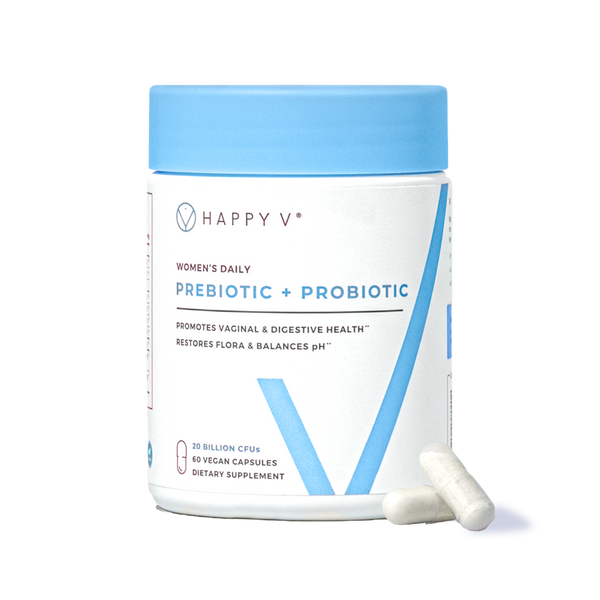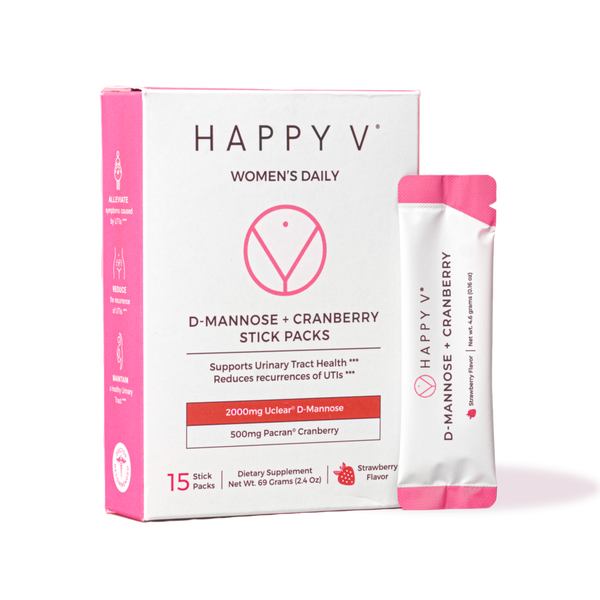- Fact Checked
- May 26, 2025
- 6 min read
Table of Contents
Table of Contents
You’re feeling a bit itchy. There’s a weird smell. Your vaginal discharge seems different. And if your relationship has had red flags—like secrecy or past cheating—it’s not unreasonable to ask: Is this vaginal infection a sign my partner is cheating?
Before you spiral, let’s get grounded. Your vagina’s pH balance is influenced by everything from your sex life to your soaps to your stress levels1. And while a yeast infection or bacterial vaginosis (BV) can show up after sex2, that doesn’t automatically point to infidelity.
Here’s what actually throws off your vaginal pH, how to tell the difference between a normal imbalance and something more, and what you can do to protect your sexual health—with or without a cheater in the picture.
This post is for informational purposes only and does not constitute medical advice. See full disclaimer below.
What Is Vaginal pH—and Why Does It Matter?
Your vagina’s pH is a measure of how acidic or alkaline it is3. A healthy range is between 3.8 and 4.5, which keeps good bacteria (mainly Lactobacillus) thriving and infection-causing microbes under control.
Lactobacilli convert sugar into lactic acid, helping:
- Prevent yeast overgrowth4
- Lower the risk of vaginal infections like BV5
- Create a barrier against some sexually transmitted infections (STIs)6
When your vaginal pH rises—becoming more alkaline—it creates an opening for issues like BV, yeast infections, and other forms of vaginitis7.
What Throws Off Your Vaginal pH?
Your vagina is resilient but also sensitive to change. These are common culprits behind imbalanced pH levels:
- Semen: Alkaline fluid that raises pH for up to 14 hours after sex8
- Antibiotics: Wipe out good and bad bacteria9
- Your period: Menstrual blood is alkaline
- Douching and scented soaps: Strip away healthy bacteria
- Stress: Affects immunity and hormone balance10
- Diet: Sugar and processed foods can feed yeast overgrowth11
- IUDs (like copper): Can cause local inflammation12
- Menopause and pregnancy: Hormonal shifts impact the vaginal microbiome13
- Poor hygiene or sex toy care: Introduce unwanted bacteria
Can Sex—and a Partner—Throw Things Off?
Yes, but not always for the reasons you fear.
💧 Semen temporarily raises vaginal pH14.
This alone can tip the balance toward BV or yeast overgrowth, especially without a condom.
🔄 New sexual partners = new bacteria.
Even if they’re not cheating, a new or different partner brings a new genital microbiome—and that can disrupt yours15.
⚠️ Poor hygiene is underrated.
Skipping condoms, not cleaning toys between uses, or switching from anal to vaginal play without washing can throw off your pH fast.
So… Is a Yeast Infection a Sign of Cheating?
No. And neither is BV. Let’s be clear:
- Bacterial vaginosis and yeast infections are not STIs.
- They’re not proof your partner cheated.
- They’re often caused by internal shifts (stress, diet, hormones) or everyday sex-related changes—not just sexual activity with someone else.
That said, if you're getting recurring infections without any obvious trigger, it’s okay to ask questions—of your body, your healthcare provider, and your partner.
In fact, discussing these issues with a partner can actually bring you closer. Here’s what our co-founders, Daniella and Hans, had to say about their own journey navigating BV and intimacy:
“There was a point when my BV flared up again, and I found myself avoiding intimacy,” says co-founder Daniella. “Hans noticed, and the conversation finally happened—not because I planned it, but because he cared enough to ask.”
Hans adds:
“The hardest part is not knowing. You wonder, ‘Is this about me?’ But when we talked openly, we actually got closer.”
When to Be Concerned
Infections don’t confirm a cheating partner—but they can raise bigger issues. Talk to your provider if you experience:
- Recurring BV or yeast infections despite lifestyle changes
- Signs of an STD or STI (like green discharge, pelvic pain, or fever)
- A partner who avoids testing or dismisses your concerns
In some cases, untreated STIs like chlamydia, gonorrhea, or trichomoniasis can present with similar symptoms. Always rule out sexually transmitted infections and sexually related diseases through testing16.
Signs Your Vaginal pH Might Be Off
Most people don’t know their pH balance is disrupted until symptoms show up. Look for:
- Itching or soreness17
- Gray, fishy-smelling discharge (bacterial vaginosis)18
- Thick, white, “cottage cheese”-like discharge (yeast infection)19
- Burning with urination or sex20
- Fishy odor after sex21
If you notice any of these, check in with a healthcare provider for diagnosis and treatment.
How to Restore and Maintain a Healthy Vaginal pH
You can’t control everything—but these steps go a long way toward supporting your vaginal health at home:
- Practice safe sex. Condoms and dental dams prevent semen and unfamiliar genital bacteria from throwing off your vaginal ecosystem.
- Avoid douching and scented soaps. These can wash away protective good bacteria and trigger irritation.
- Wipe front to back and wash with warm water. Keep it simple—avoid scrubbing, and stick to the vulva, not inside the vagina.
- Urinate and rinse after sex. This helps flush bacteria and normalize pH levels after exposure to semen or lube.
- Change menstrual products regularly. Pads or tampons left in too long can become breeding grounds for harmful microbes.
- Wear breathable cotton underwear. Reduces moisture, heat, and yeast overgrowth risk.
- Manage stress and prioritize sleep. Chronic stress lowers immunity and can shift the vaginal microbiome.
- Limit sugar and ultra-processed foods. High sugar fuels yeast infections, and a poor diet can disrupt balance.
- Consider probiotics. Consider supporting your vaginal microbiome with a daily probiotic. Some people choose options with strains like Lactobacillus rhamnosus and L. acidophilus, which are studied for their role in maintaining a balanced vaginal ecosystem. Happy V’s Prebiotic + Probiotic includes these well-studied strains, but always check with your provider before starting a new supplement.
Note: Probiotics are not a treatment for active infections but may help prevent recurrence when taken regularly.
Final Thoughts: Trust, Vaginal Health, and What You Deserve
Your vagina is a self-cleaning, finely tuned system—but it can still get thrown off by stress, hormones, diet, and yes, sex. A vaginal infection is not a sign of failure—or proof of a cheating partner.
If something feels off, listen to your body. And don’t be afraid to start a conversation—with your provider, your partner, or yourself. You deserve clarity, compassion, and care—always.
Disclaimer: This blog is for informational purposes only. It is not intended to diagnose, treat, cure, or prevent any disease. Statements regarding supplements have not been evaluated by the FDA. Always consult a healthcare professional before starting any new supplement or treatment.














